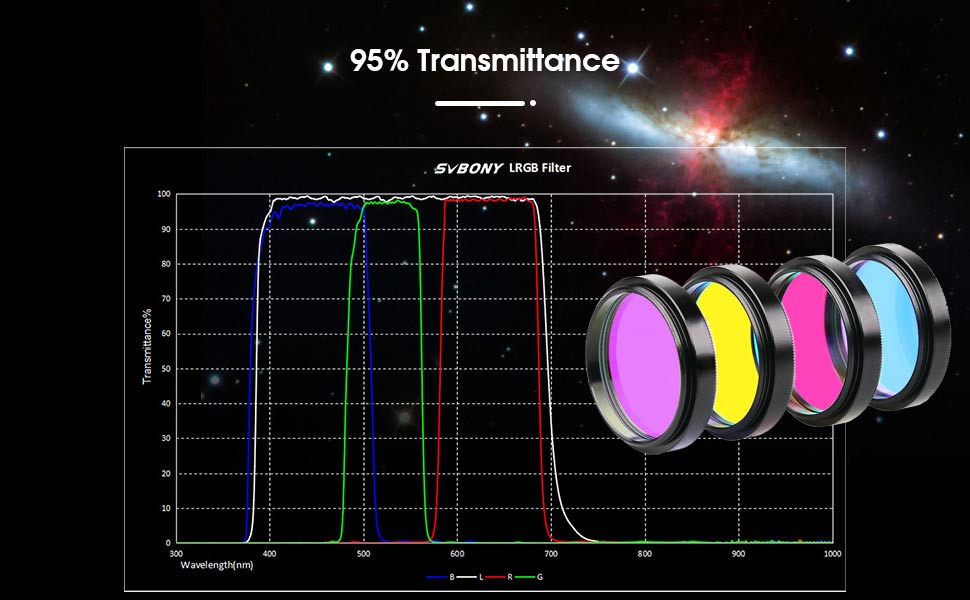Blog
Table of Contents

Differences Between Wide-band and Narrowband Filters
Wide-band Filters
When capturing images of celestial objects using a monochrome camera, we take exposures through red, green, and blue filters separately, and then combine these exposures to restore the colors of the target. The filters used in this process are referred to as R, G, and B filters. The RGB filters operate similarly to the previously mentioned UV/IR CUT filters; for example, the R filter allows light in the range of approximately 580-680nm to pass while blocking all other wavelengths. It can be observed that the bandwidth here spans several tens or even hundreds of nanometers, far exceeding the 5nm bandwidth level of narrowband filters, hence the term "Wide-band filters."
The image obtained with a monochrome camera using a specific filter is usually referred to as the information from a particular channel.

In addition to RGB, we also utilize an L filter, which essentially represents the combination of the RGB spectrum. In astronomical photography, brightness (luminance) information plays a crucial role in enhancing the signal-to-noise ratio of the target. Therefore, we use a separate L filter to capture the total RGB information, improving shooting efficiency.
Narrowband Filters
In deep-sky photography, most celestial objects emit light from specific elements. The light emitted by singly ionized hydrogen is called Hα radiation; doubly ionized hydrogen emits Hβ radiation; singly ionized sulfur emits Sii radiation; and doubly ionized oxygen emits Oiii radiation. Besides these, there are many other elements, but Sii, Hβ, Hα, and Oiii are the most commonly encountered, with Hα accounting for the vast majority.

Narrowband filters are designed to transmit a very narrow range of specific wavelengths. For instance, a 7nm Hα narrowband filter has a center wavelength of 656.6nm ±3.5nm, resulting in a total bandwidth of 7nm.
During post-processing, we convert the information from the wavelengths in order from long to short (S/H/O) into the RGB color channels, a process known as SHO synthesis, which produces what is commonly referred to as Hubble colors. If we convert the information from the H/O/O channels into the RGB primary colors, it’s called HOO synthesis, which offers a representation closer to true colors. It's important to note that whether it's SHO or HOO, these do not represent the actual colors of these elements, so we typically refer to images created through narrowband synthesis as false-color images.
Dual Narrowband Filter
By using narrowband filters, the transmitted light is concentrated in specific and narrow spectra, resulting in images that usually exhibit striking contrast and finer star points. Coupled with the unique Hubble colors, narrowband deep-sky photography possesses an unmatched appeal.

These filters do not solely select one type of element's spectrum; instead, they combine multiple spectra to allow all pixels of a color camera to be sensitive to light simultaneously. Among these, the most common and scientifically valuable elements—Hα, Hβ, and Oiii—are selected, and we refer to this type of narrowband filter as dual narrowband filters.


There are no customer reviews yet . Leave a Reply !